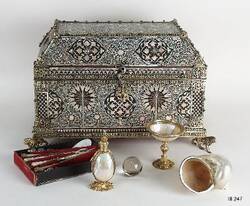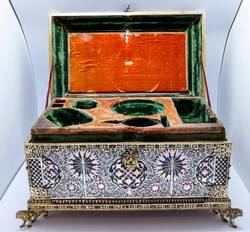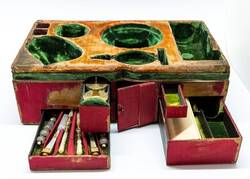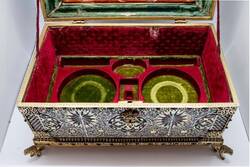No less than thirty-six objects – ranging from crockery to writing materials, from gaming chips to toiletry utensils – fit into this somewhat oriental-looking box. However, there’s no sign that it was actually used. The travelling casket landed straight in the Dresden Kunstkammer, the royal collection of art and curious artefacts. Objects like this seem to have been produced purely to satisfy the collector’s instinct and the rulers’ need to display their wealth and power.
The Elector of Saxony, Christian the Second, bought this travelling casket together with some other mother-of-pearl objects in 1602. He paid the astronomical sum of eight-and-a-half thousand Thalers – three times as much as for the Rolling Ball Clock. His purchase broke all records. It was the most expensive acquisition in the early history of the Dresden Kunstkammer.
Objects decorated with mother-of-pearl had always been popular with royal collectors. Like most mother-of-pearl objects brought to Europe from India in the sixteenth century, this travelling casket was made in Gujarat.
Further Media
- Location & Dating
- Mother-of-pearl work: Gujarat (India), end of the 16.th century., mounts and insets: Leipzig, ca 1600
- Material & Technique
- Mother-of-pearl plates over wooden core, silver, gilt, bitumen varnish, velvet
- Dimenions
- Gesamt: H 26,8 cm, B 43,5 cm, T 28,0 cm
- Museum
- Grünes Gewölbe
- Inventory number
- III 247



